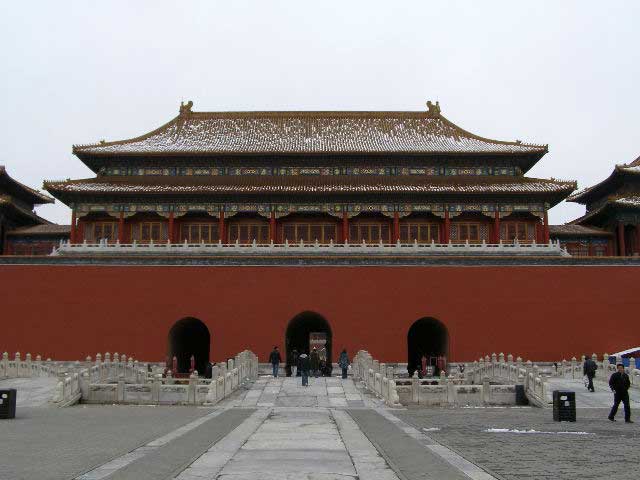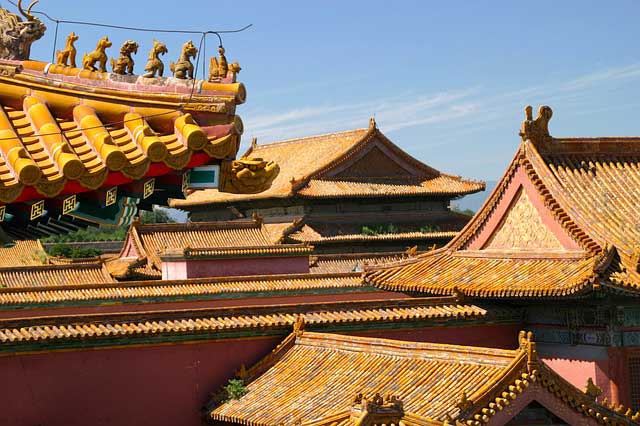The Forbidden City Beijing
Beijing’s massive Forbidden City was the palace of the emperors during the Ming and the Qing Dynasties. It is located just north of Tiananmen Square in the center of Beijing and is a UNESCO World Heritage Site.
History
Many of the buildings today date from the Qing Period as much of the Forbidden City was destroyed by fire and or ransacked during the Ming Period.
The grounds cover approximately 720,000 square meters, or 178 acres, and contain some 800 buildings with 9,999 rooms. Wear comfortable shoes and go slow. The scale of the grounds is overwhelming.
The Forbidden City is a huge rectangle surrounded by a six-meter deep moat and a ten-meter high ochre-colored wall. There are five halls, seventeen palaces, and many, many other buildings and exhibits.
As you enter from the street, you will pass through a gauntlet of soldiers stationed on the bridges that cross the small external moat; then you will pass under the iconic portrait of Chairman Mao. It is free to enter this gate.
Here you will run into many people selling various things. Keep walking.
To continue through and past the next gate, you will have to pay. This will bring you into the Outer Court area. Among the highlights of the Outer Court is the Hall of Great Harmony in front of which stands the Gate of Supreme Harmony.
Carrying on, you reach the Inner Court. This area was in the past restricted to the Emperor’s entourage: his family, concubines, and eunuchs. The Palace of Heavenly Purity is the most interesting site in this area.
 |
| Meridian Gate |
At the far northern end of the Forbidden City is the imperial garden. This is the end of the grounds. You can exit here, or, as many do, loop back on the other side of the grounds and hike back to the main entrance. There is the requisite gift shop and a small place for snacks.
The Forbidden City is now undergoing repairs, the first of which will be completed in time for the Olympics in 2008; the job will be totally done by 2020.
Access
North of Tiananmen Square, the Forbidden City is less than one minute from Tianan Men Dong Station.
Details
The Forbidden City is open from 8:30 am – 5:30 pm (4:30 pm in winter). Admission to the Forbidden City costs 40 yuan in the winter, 60 yuan in the summer. Audio tours are available in many languages and cost 40 yuan to rent. Allow at least 2-3 hours to walk the grounds. For disabled, there are ramps in the central part of the grounds. However, much of it is not accessible.
Tel: 6513-2255
Nearest Subway Station Tianan Men Dong Station
© Beijing-Visitor.com


.jpg)
